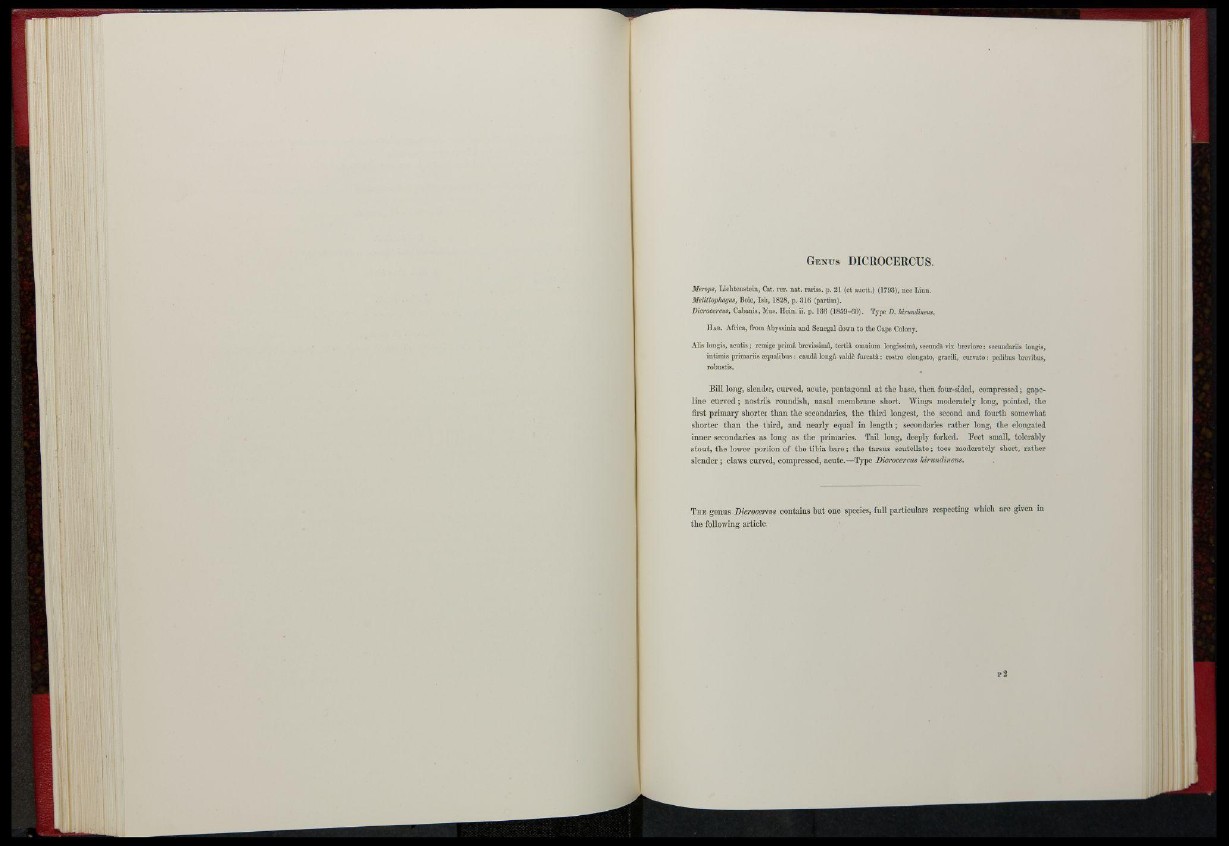
GENUS DICROCERCUS.
Merops, Liehteustein, Cat. rer. nat. rariss. p. 21 (et auctt.) (1793), ncc Linn.
Me/itt'iji/iiiiiiix, liiiic, 1MS, 1S28, p. 316 (partim).
Dicrocercits, Cabanis, Mus. Hein. ii. p. 13(! (1859-60). Type D. /drundineua.
HAD. Africa, from Abyssinia and Senegal down to the Cape Colony.
Alis longis, acutis; remige prima brcvissinia, tertia omnium longissimfi, sccunda vis breviore: secuudariis longis,
intimis primariis ajqualibus : eauda longa valde furcata: rostro elongato, graeili, curvato : pedibus brevihus,
robustis.
Bill long, slender, curved, acute, pentagonal at the base, then four-sided, compressed; gapeline
curved; nostrils roundish, nasal membrane short. "Whigs moderately long, pointed, the
first primary shorter than the secondaries, the third longest, the second and fourth somewhat
shorter than the third, and nearly equal in length; secondaries rather long, the elongated
inner secondaries as long as the primaries. Tail long, deeply forked. Beet small, tolerably
stout, the lower portion of the tibia bare; the tarsus seutellate; toes moderately short, rather
slender ; claws curved, compressed, acute.—Type Dierocercua hmmdmem.
THE genus Dicrocercus contains but one species, full particulars respecting which are gii
the following article.